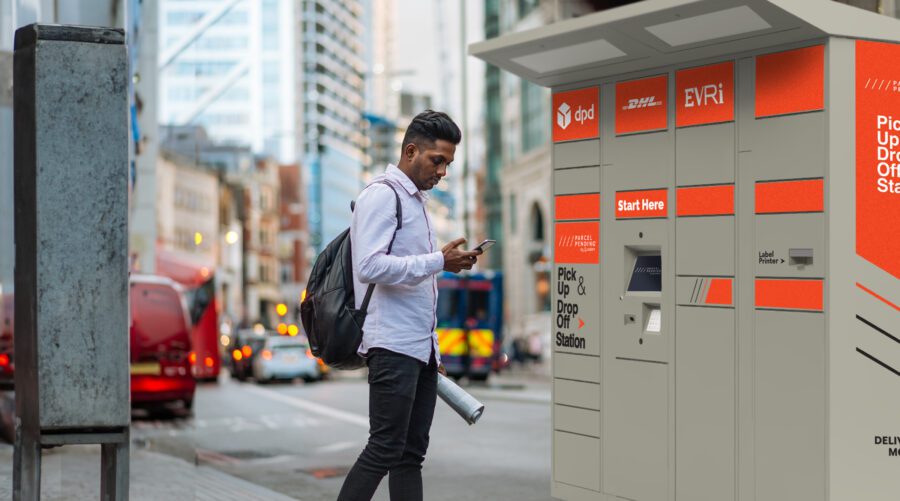
University
6 Emerging Technologies in Higher Education
Written by: Parcel Pending
5 Min Read
Published: April 30, 2022
Updated: March 18, 2024
Updated March 18, 2024
The seemingly overnight closures of college campuses across the globe brought to the forefront the void in leveraging technology solutions to boost learning. Now, however, there are several emerging technologies in higher education that are helping institutions elevate student learning, promote digital transformation, and improve student engagement. Here are the six key technology in higher education trends to watch.
#1 Blended Learning: The Zoom Room Boom
Whereas before, most higher education institutions barely acknowledged the role of remote learning, today it’s a mainstay of college campus amenities and the student experience. The surprising reality is that universities are investing in smart campus IoT, such as permanent video and augmented reality technology that allows for hybrid (on-campus and off-campus) instruction. Northeastern University in Boston, for example, has outfitted 200 classrooms with this educational technology and the University of Pittsburgh has 180 rooms outfitted – with more on the way.
The University of British Columbia took a slightly different approach and fused together with a hybrid model, whereby actors were in Vancouver while the sound and lighting technology were operated by students in San Francisco and Tokyo1!
Brian Leas, the technological support administrator for Missouri State University’s Faculty Center for Teaching and Learning had just one week to equip 50 Zoom rooms because of the pandemic2. As he explains: “The feedback we’ve received is that they’re going to be useful no matter what happens with the pandemic, whether we’re remote or hybrid or we’re eventually back to normal.”
#2 Micro-Credentials are the Future
Since a 2019 Newsweek poll found that students would rather go to a community college with a guaranteed $100,000 job than go to Harvard tuition-free, it’s imperative that institutions offer a practical curriculum that directly leads to employment opportunities3. Enter the growth in micro-credentials.
Micro-credentials are courses, badges, certifications, and boot camps focused on a specific skill set. A jaw-dropping 700,000 micro-courses are currently available online4. Further, certificates and non-degree programs are the fastest growing technology enhanced learning offerings at community colleges and institutions of higher education over the last year.
#3 Expanding Access to and Integrating Data
A key trend that faculty members and other educators widely embrace is removing data silos to better understand and access data. Of course, the end goal remains to improve digital transformation, teaching, and learning practices. A new program at the University of Wisconsin aims to tap into data with its new Master of Science in Educational Psychology: Learning Analytics degree. Steven Butschi, Head of Education at Google Cloud views the shift in data this way5: “Across departments, functional areas and classes, people will get better at managing/using/storing data.”
#4 Investing in Online Learning Options
The floodgates of digital learning technology in higher education were opened at the beginning of the pandemic. Today, institutions of higher education are beginning to look beyond Zoom to meet the student outcome demands of online learning. Saint Mary’s University of Minnesota is a perfect example of investing and integrating emerging technology trends, technology-enhanced learning, and IoT applications in university.
The institution shifted to a Learning Management System (LMS) called Canvas. It then overlaid a tool called Ally, which helps faculty members, instructors, and teachers provide alternative formats to make their courses more accessible for people with disabilities. Andrea Carroll-Glover, vice provost for online strategy and programs highlights the benefits this way: “Thanks to Canvas, the online teaching and learning experience became mobile friendly, much more intuitive, and enhanced the faculty’s teaching experience.”
#5 Creating Short form Video-Based Learning
Thanks to TikTok – with its 1 billion active users and 52 minutes spent on it daily – students and educators have embraced short-form video learning, educational content, and instructional design6. Studies demonstrate that videos shorter than two minutes have the best engagement and 95% of video watchers retain what they learn compared to 10% who retain what they read7.
#6 Installing Smart Lockers that Work as a Campus Hub
As higher education institutions move towards one-stop transactional offices, lockers play a key role in having full-time, part-time, micro-credential, or hybrid-enrolled students pick up needed items in just one place.
Tom Ellett, for example, holds a rare job in higher education: Chief Experience Officer at Quinnipiac University8. One of his key learnings from students in 2021 was the frustration in dealing with different offices for administrative issues such paying their bills, receiving financial aid, changing meal plans, and registering for classes. Last year, Ellett moved all of these services under one roof.
A Rand Corporation study of four community college systems found a 3% average increase in student retention by moving to an integrated model, with a better outcome for adult learners over the age of 25, and students of color9.
Educational institutions have been able to leverage an integrated campus mail services model for delivery by implementing solutions like Parcel Pending by Quadient’s Campus Hub™. Here are just a few examples of what universities can deliver with an integrated delivery model:
- Bookstore Merchandise: Clothing, books, electronics, gifts and more can be retrieved with zero face-to-face interaction.
- Electronics: Student laptops, tablets, and other school-owned learning technology can be disseminated.
- Class Equipment: Classrooms can distribute equipment for course work and projects and students can easily and safely return the items.
- On-Campus Dining: A student can simply place an order for a meal online via the university’s dining software and then pick-up their food and beverage items safely without coming in contact with anyone.
- Student Mail: Packages and regular USPS mail.
- Move-in/Move-out Materials: Items such as keys, ID cards, welcome packets and other important school materials can be shared with students via smart parcel locker.
- Event Tickets: Tickets for sporting events and other student activities can be distributed via smart retail lockers to minimize lines and contact with ticket agents.
Higher education and technology will continue to evolve to meet the needs of students. Online learning is here to stay with universities investing in virtual reality, artificial intelligence and machine learning, platforms that support mobile learning, video conferencing options beyond Zoom, short form video options, and offering micro-credentials in the form of bootcamps, courses, or badges.
Lockers play a role too –– leveraging technology to act as a central distribution point for items beyond parcels. To find out how a smart electronic locker can upgrade your student experience, contact a Parcel Pending representative today using the form below.
Sources:
- Pang, Amelia. “6 Emerging Technology Trends in Higher Education”. EdTech Magazine, June 2, 2021. https://edtechmagazine.com/higher/article/2021/06/6-emerging-technology-trends-higher-education
- Hayhurst, Chris. “With Hybrid Learning on the Rise, Higher Ed Sees a Zoom Room Boom”. EdTech Magazine, February 23, 2021. https://edtechmagazine.com/higher/article/2021/02/hybrid-learning-rise-higher-ed-sees-zoom-room-boom
- Fink, Jenni. “Most College Students Would Choose Community College with a Guaranteed $100K Job Over Free Harvard Education”. Newsweek, August 12, 2019. https://www.newsweek.com/college-poll-harvard-community-college-guaranteed-job-1453902
- Micro-Pathways Explained. 2022. Ebook. Education Design Lab. Accessed April 5, 2022. https://eddesignlab.org/news-events/why-micro-pathways/
- Teich, Annie Galvin. “Trends Driving Innovation for Higher Education in 2022”. Fierce Education, December 21, 2021. https://www.fierceeducation.com/technology/future-trends-driving-innovation-higher-education.
- Dean, Brian. “TikTok User Statistics (2022)”. Backlinko, January 5, 2022. https://backlinko.com/tiktok-users
- Wall, Kevin. “Videography is More Important Than Ever in Higher-Ed Recruiting”. Kwall, February 16, 2022. https://www.kwallcompany.com/blog/short-form-videography-and-student-recruitment
- Busta, Hallie. “Living the student life: A glimpse into the job of a university chief experience officer”. Higher Ed Dive, June 25, 2021. https://www.highereddive.com/news/living-the-student-life-a-glimpse-into-the-job-of-a-university-chief-exper/602419/
- Daugherty, Lindsay, William R. Johnston, and Tiffany Berglund. 2020. Connecting College Students To Alternative Sources Of Support. Ebook. RAND Corporation. https://www.rand.org/pubs/research_reports/RR1740-1.html





